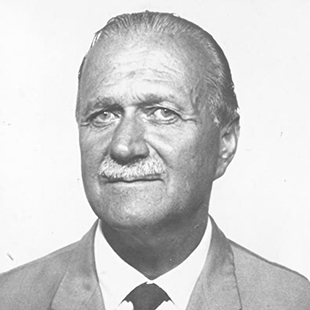Piero Bottoni

Piero Bottoni (1903-1973) was an Italian architect and urban planner, an important exponent of Rationalism. The theoretical bases of his thought placed the social value of architecture at the centre, with an important focus on the theme of building for the working classes and the integration of the suburbs into the urban fabric: for Bottoni a city must always be considered as a unitary organism and not only as a set of buildings, an ideology that he also carried forward through political militancy in the ranks of the Italian Communist Party which also elected him deputy to the National Consultation in the immediate post-war period (1945-46). His work was closely linked to the city of Milan, where he was born and where he spent most of his life, from his studies at the Polytechnic to the construction in the 1950s of important buildings such as Palazzo Argentina in Corso Buenos Aires (1947-51, in collaboration with Guglielmo Ulrich) or Palazzo INA in Corso Sempione (1953-57). He also left an important mark on the urban fabric of the city of Milan through the promotion of the Quartiere Triennale 8, a sort of experimental “ideal neighborhood” dedicated to liveability that he launched as a collective experiment in his role as extraordinary commissioner of the Triennale. Alongside the QT8, he also designed the construction of Monte Stella, an artificial hill built using the debris left by buildings destroyed by bombing during the Second World War and dedicated to his wife Elsa Stella. However, he also had an important international projection as an Italian delegate at the International Congresses of Modern Architecture, a role he played from 1929 to 1949 that allowed him to come into contact with some of the most avant-garde European experiences in Modernism, subsequently transmitting their teachings to Italy through the promotion of important urban plans – often left only on paper – in many cities including Bologna, Piacenza, Siena, Rome, Como and Milan. Particularly important was his Master Plan for the Aosta Valley (1936), drawn up at the instigation of Adriano Olivetti, which, although never implemented, gave an important boost to the debate on urban planning in Italy. Urban planning was his great passion throughout his life: if during the years of fascism his teaching activity was hindered for political reasons, starting from 1951 he was able to hold courses at the Polytechnic as a freelance lecturer and then in 1967 he became the chair holder of Urban Planning at the same university. Bottoni was also a designer: the most famous of the furnishings he designed are today re-proposed by the Zanotta brand.